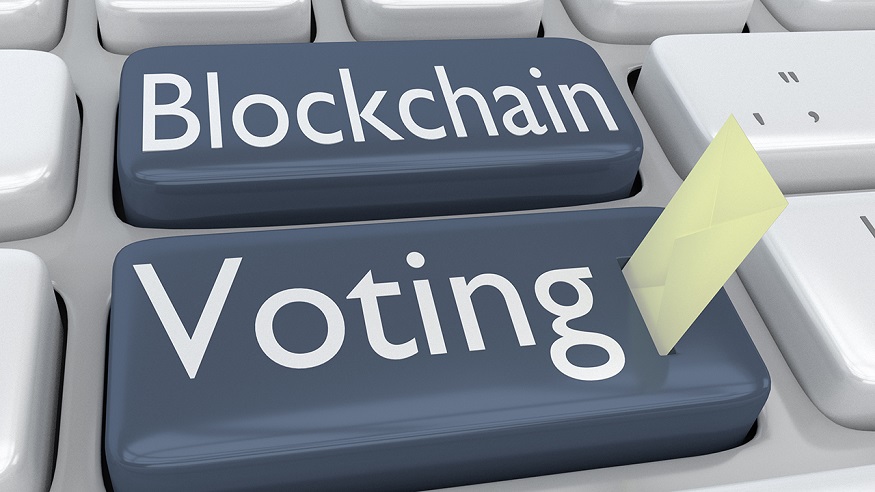Technology
Blockchain Voting Systems: Ensuring Fair and Transparent Elections

Introduction
In today’s digital age, traditional voting systems face challenges ranging from security vulnerabilities to logistical inefficiencies. Amidst these challenges, blockchain technology emerges as a promising solution to ensure fair and transparent elections. Blockchain, the underlying technology behind cryptocurrencies like Bitcoin, offers a decentralized and tamper-resistant framework ideally suited for voting systems. This article explores the potential of blockchain voting systems in revolutionizing democratic processes, highlighting their benefits, challenges, and real-life examples.
Understanding Blockchain Voting Systems
Blockchain, essentially a distributed ledger technology, records transactions across multiple computers in a way that makes them immutable and transparent. In the context of voting, blockchain can serve as a secure platform for recording and tallying votes while preserving anonymity and integrity. Here’s how it works:
- Voter Identity Verification: Before casting a vote, voters are authenticated using cryptographic methods, ensuring that only eligible individuals participate.
- Vote Casting: Once authenticated, voters cast their votes through a secure interface, with each vote recorded as a transaction on the blockchain. These transactions are encrypted to maintain voter privacy.
- Consensus Mechanism: Consensus algorithms, such as Proof of Work or Proof of Stake, validate and record the transactions on the blockchain, ensuring that only legitimate votes are counted.
- Immutable Record: Once recorded, votes become part of a permanent and tamper-proof ledger, preventing any unauthorized modifications.
- Auditable and Transparent: The decentralized nature of blockchain allows for real-time auditing by stakeholders, enhancing transparency and trust in the electoral process.
Benefits of Blockchain Voting Systems
- Enhanced Security: Blockchain’s cryptographic principles and decentralized architecture make it highly resistant to hacking and tampering, ensuring the integrity of election results.
- Transparency and Auditability: Every vote cast on the blockchain is transparent and traceable, enabling independent audits and verification of election outcomes.
- Improved Accessibility: Blockchain voting systems can potentially increase voter accessibility by enabling remote and mobile voting options, thereby encouraging higher voter turnout.
- Reduced Costs and Fraud: By eliminating intermediaries and manual processes, blockchain voting systems can significantly reduce the costs associated with traditional voting methods while mitigating the risks of fraud and manipulation.
Challenges and Considerations
- Identity Verification: Ensuring accurate voter authentication without compromising anonymity remains a challenge, as blockchain relies on cryptographic keys that must be securely managed.
- Scalability: As blockchain networks grow in size, scalability becomes a concern, particularly during high-volume election periods where large numbers of transactions must be processed quickly.
- Regulatory and Legal Frameworks: Developing regulatory frameworks to govern blockchain voting systems, including addressing concerns related to privacy, jurisdiction, and accountability, is essential for widespread adoption.
- Technological Literacy: Ensuring that voters, election officials, and stakeholders possess the necessary technological literacy to use and trust blockchain-based voting platforms is crucial for successful implementation.
Real-Life Examples
- Estonia’s e-Residency Program: Estonia has been at the forefront of digital governance, implementing blockchain technology in various sectors, including elections. The country’s e-Residency program allows citizens to conduct secure online voting using blockchain, enhancing accessibility and voter engagement.
- Sierra Leone’s Blockchain-Verified Election: In 2018, Sierra Leone became one of the first countries to utilize blockchain technology in a presidential election. Through a partnership with Agora, a blockchain-based voting platform, the country successfully conducted a blockchain-verified election, providing an additional layer of transparency and integrity to the electoral process.
- Voatz in the United States: Voatz is a mobile voting platform that leverages blockchain technology to facilitate remote and accessible voting for overseas military personnel and voters with disabilities. Although Voatz has faced scrutiny and security concerns, it represents a significant step towards modernizing the electoral process in the United States.
Conclusion
Blockchain voting systems hold immense potential in revolutionizing democratic processes by ensuring fairness, transparency, and security in elections. While challenges such as identity verification, scalability, and regulatory frameworks must be addressed, real-life examples demonstrate the feasibility and benefits of adopting blockchain technology in electoral systems. As nations continue to embrace digital innovation, blockchain voting systems offer a pathway towards more inclusive, efficient, and trustworthy elections in the 21st century.
